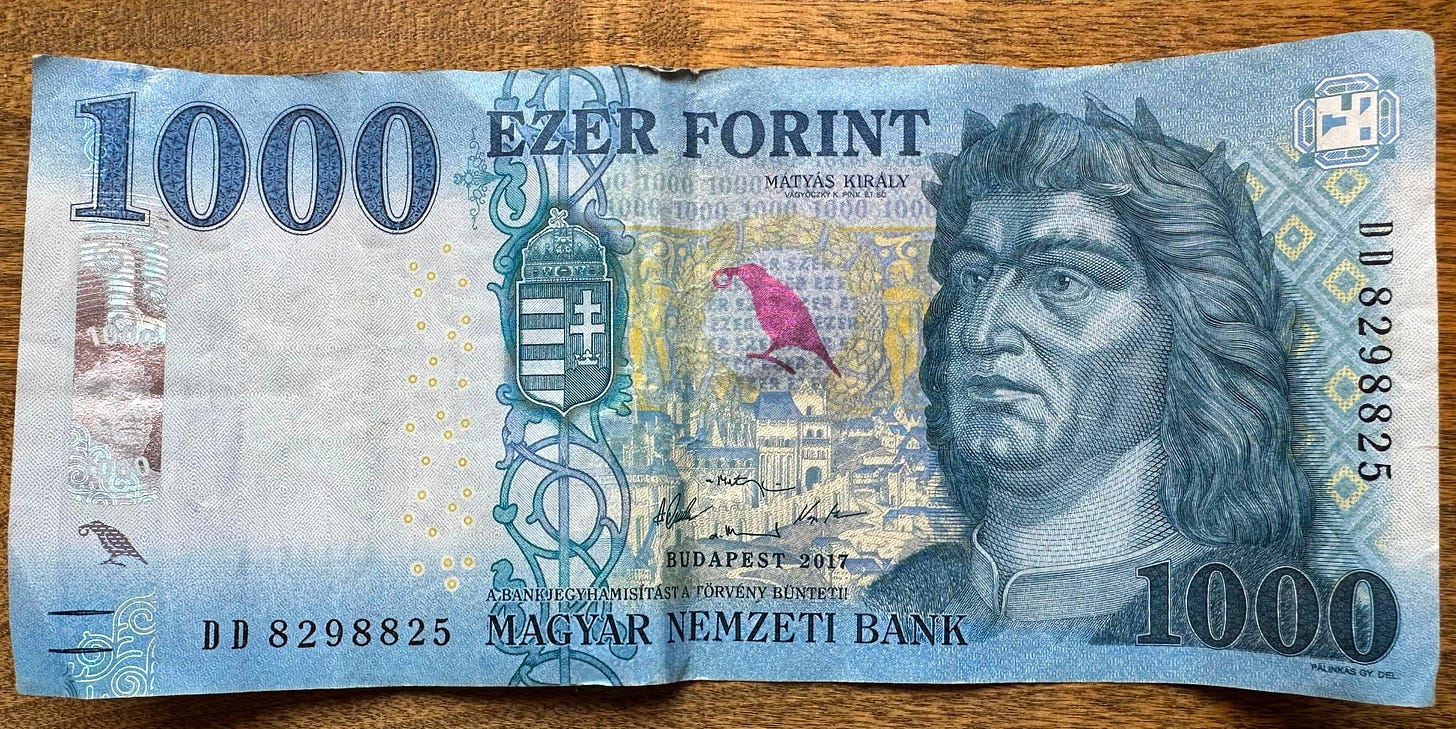Money, Money, Money
How to buy stuff overseas
Some of the most frequent questions asked by new overseas travelers involve money.
How do we pay for stuff over there?
How much cash to bring?
How will I know the cost of things marked in a foreign currency?
When and where do I exchange currency?
Should I buy Traveler’s Checks? (Ans: Absolutely not.)
Nowadays, paying for things while overseas couldn’t be easier. Almost every country and retail establishment we’ve visited accepts major credit and debit cards or cash apps on your smartphone. Tap-to-pay options are at least as popular as they are in the US.
There is no need to bring a large amount of money on your Cruise by Land, although you probably want to have some cash in your pocket for tips and smaller purchases. ATM kiosks are widely available in most banks and retail centers. Don’t use money changers, especially those at the airport, as they typically charge a fee on top of the exchange rate.
Make sure to bring more than one active credit card with you. Banks have fraud departments that watch your charges and flag any suspicious changes, such as suddenly charging from a different country. You can contact your bank before traveling and warn them of the upcoming trip (we normally do this). But that’s no guarantee they won’t put a hold on your card without notification, and sometimes getting in touch with a person to correct the situation can be difficult from overseas.
Not all cash machines (ATMs) are as easy or safe to use. Generally, choose one connected to a bank or one in a well-lit area. Sometimes these are located in enclosed rooms attached to the bank building. Be sure to give the person using the machine plenty of space.
One tricky detail when paying by CC overseas has to do with where the exchange rate is applied. The two choices are, 1) let the retail establishment do the exchange, or 2) let your bank do it. We have found that the US banks usually give us a slightly better exchange rate than local establishments. So, if you’re paying the check at a restaurant in Germany, for example, and the waiter asks if you want to pay in dollars or euros, we would always answer, euros. That way, the euros-to-dollars conversion is done by the CC company.
Be aware that some banks charge an extra fee to handle international transactions. ATMs not associated with an affiliated bank might also charge a transaction fee. Try to find a bank that does not charge international fees and refunds any ATM fees you might incur.
Remember that tips in Europe and elsewhere are viewed differently than in the US. Servers and other staff are paid a fair wage and do not typically expect a tip for every check. Please do tip your servers to express your appreciation for going above and beyond, but it is not expected as a general rule, and so it is not added or suggested on your bill.
You may also find that pubs, bars, and even sidewalk cafes will expect payment for each item or round of items. These establishments might not let you open a tab and leave it open. Unless your CC company charges a per-transaction fee (which you should avoid), this isn’t a real issue because paying is a simple matter of tapping your card or phone (for cash app payments).
So, how much does, say, a bottle of wine really cost in Italy if it’s marked 4 euros? Or 130 Limpira in Honduras, 200 Lira in Turkey, 1500 Forint in Hungary? The answers vary depending on currency markets, but right now, all those bottles of wine would cost about $5 USD each. When you’re shopping in a grocery store, it can sometimes be difficult to gauge which items are affordable and which are overly expensive or dirt cheap, compared to prices you’d expect at home. All I can tell you is, keep a calculator handy at first, but you’ll grow accustomed to the conversion the longer you stay.
What if you have foreign currency left when you leave to go home? If you plan to return to the same country or economic region (like the EU), the answer could be, keep it until you return. But if you don’t have plans to return any time soon, try to make sure you spend it all before you go. Currency exchange in the US is not always as easy as it is elsewhere, and there will be exchange fees involved again. So, don’t keep a lot of cash on hand while traveling, and spend whatever you have left at the airport gift shop on the way out!



